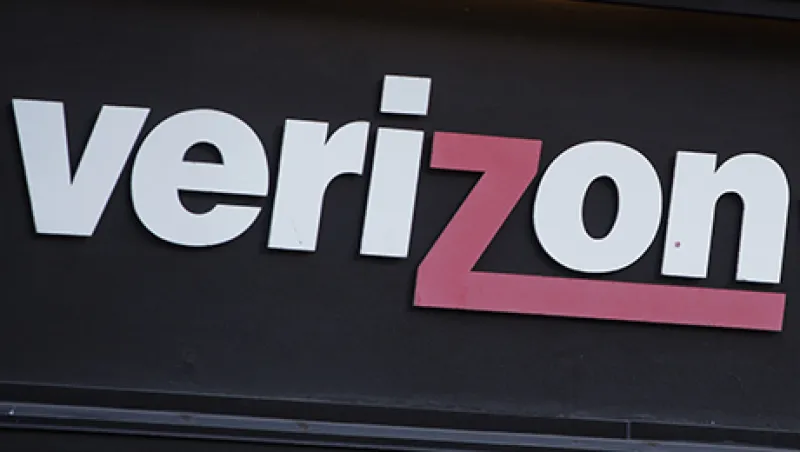In a move that surprised many in the corporate pension community, late last month the Supreme Court granted some retirees of Verizon Communications a petition for a writ of certiorari, which vacated a lower court’s decision on a lawsuit alleging the telecommunications company violated the Employee Retirement Income Security Act. The U.S. Court of Appeals for the Fifth Circuit, in New Orleans, will now reconsider the case.
The background to Pundt v. Verizon Communications Inc. dates to the 2012 decision by the company to fully fund the pension plans of 41,000 retirees and purchase a group annuity from Prudential Insurance Co. of America. Under the deal, which transferred $7.5 billion in pension liabilities from Verizon to Prudential, the insurance company pays full pension benefits to Verizon retirees. The plaintiffs in the Pundt case are the 50,000 plan participants who remain in Verizon’s pension plan after the annuity deal. They argue that they should get standing, or the right to sue, over Verizon’s alleged mismanagement of the plan as a result of the annuity purchase, even though they can’t prove actual or imminent harm because their benefits are not currently impaired. The Association of BellTel Retirees asked the Supreme Court for the writ because lower courts have made a series of conflicting decisions on ERISA cases, a situation that the association says undermines the original intent of ERISA to be a national standard of protection for pensions. The BellTel association represents more than 200,000 employees who once worked for companies that emerged from the breakup of AT&T in 1984.
Pension risk transfers allow corporations to move their defined benefit liabilities to an insurance company or pay employees a lump sum in lieu of a yearly check for life.
“The next-step order is for the same three-judge panel at the Fifth Circuit in New Orleans to rethink what they did because we were pointing out their errors,” says Curtis Kennedy, the Denver-based lawyer for the retirees, who says he has handled 70 pension cases related to former Bell System employees. Kennedy plans to ask the court to revisit the entire set of decisions that allowed the Verizon–Prudential deal to proceed, including the initial annuity purchase. “We will certainly vigorously defend the righteousness and the appropriateness of the case,” he adds.
It’s unfair for beneficiaries to have to wait until they experience harm in order to sue, he explains. “By the time a plan is bankrupt, it’s too late,” Kennedy says. “We were the first to sue on behalf of retirees who got kicked out of ongoing, thriving pension plans and who lost all federal rights and ready access to courts.”
The case is an important one, as a growing number of companies are looking to reduce the risks of their pension plans through deals like Verizon’s. More than 500 transactions, which include lump sums, were done between 2007 and 2013, including Verizon’s 2012 deal. That same year General Motors transferred $25.1 billion in liabilities when it bought a group annuity from Prudential, and Ford Motor Co. offered a lump sum to 90,000 former salaried employees, settling about $18 billion of its $49 billion in U.S. pension liabilities. Pension risk transfers have always been allowed under ERISA, but changes in regulations that included the Pension Protection Act of 2006, as well as increased longevity, have pushed companies to think seriously about their options to reduce their risks.
But Verizon retirees argue that annuities remove pensioners from oversight by federal law and the protection offered by the Pension Benefit Guaranty Corp., the agency created by ERISA to insure pensions. Instead, retirees with annuities are subject to state regulations on insurance companies. BellTel Retirees wants former employees to have a voice in the decision making and want options for them as well, including lump sum distributions. Jack Cohen, chairman of the BellTel Retirees group, says, “Verizon retirees, and by extension millions of others whose pensions have been de-risked, cannot simply be dismissed.”
Though Kennedy says he plans to ask the Fifth Circuit to look at the entire case from the beginning, the Supreme Court’s decision is much more narrow. The court is asking the Fifth Circuit to reconsider the one issue of standing. “Have the participants suffered sufficient concrete injury based on the de-risking transfer to be able to proceed in court?” postulates Gregory Jacob, a partner with O’Melveny & Myers in Washington. Jacob, an expert in ERISA law, represented Prudential when the BellTel Retirees filed for a temporary restraining order to stop the de-risking transfer from going through in 2012. But he wasn’t involved in any subsequent cases.
The Supreme Court’s remand relies on its 2015 decision in Spokeo Inc. v. Robins, which held that plaintiffs cannot attain standing without proof of concrete harm. The decision, though, left it to an appeals court to rule further. Jacob says the Fifth Circuit now has the opportunity to adjust its reasoning and language in the Verizon case to ensure it is consistent with Spokeo.
Jacob argues that the Supreme Court’s decision will not change the underlying calculus of these deals. “The advantage is that a company is shifting the risk to an insurance company that pension obligations will turn out to be more than they expected,” he says. “The disadvantage is that insurers charge a fee for that.”







